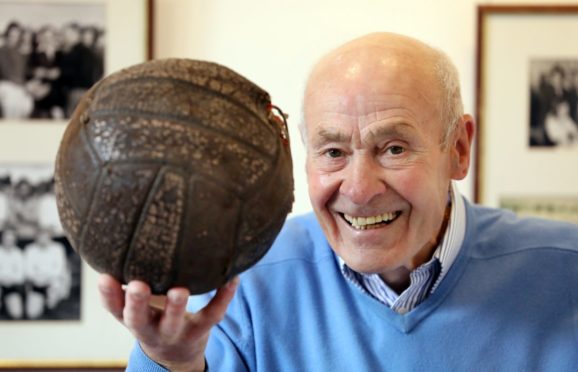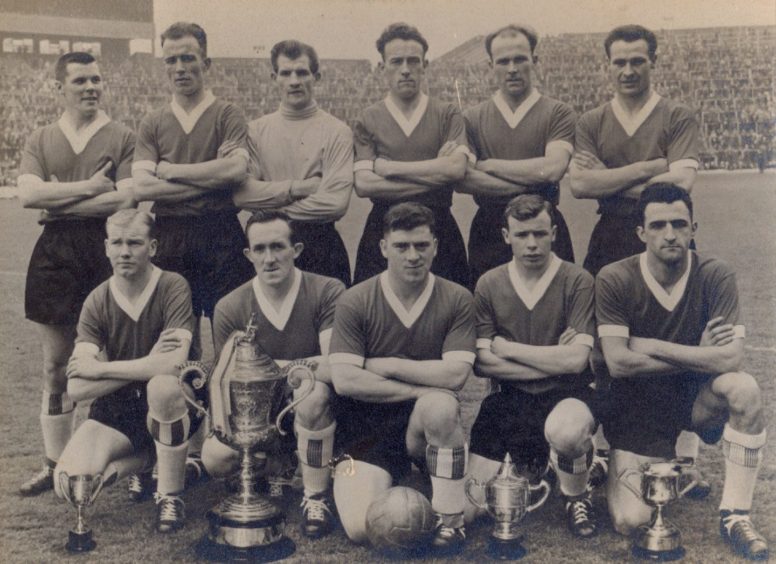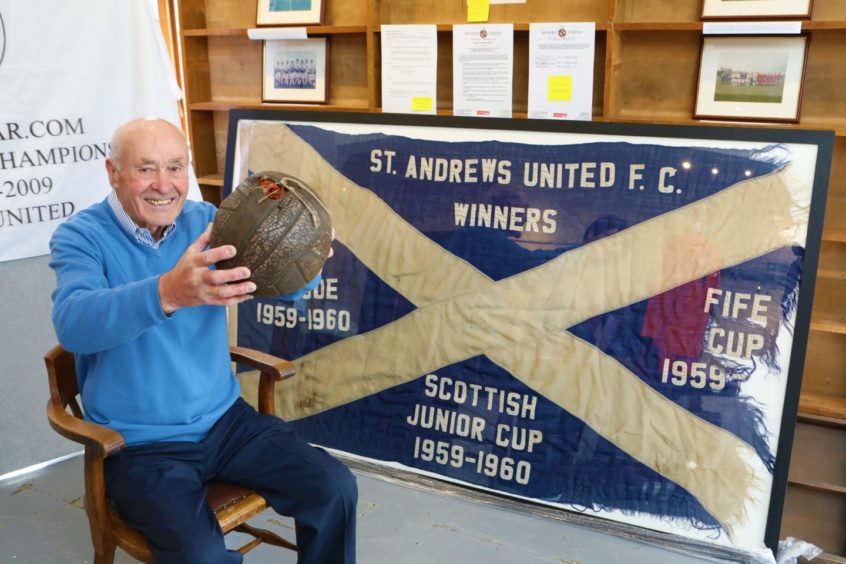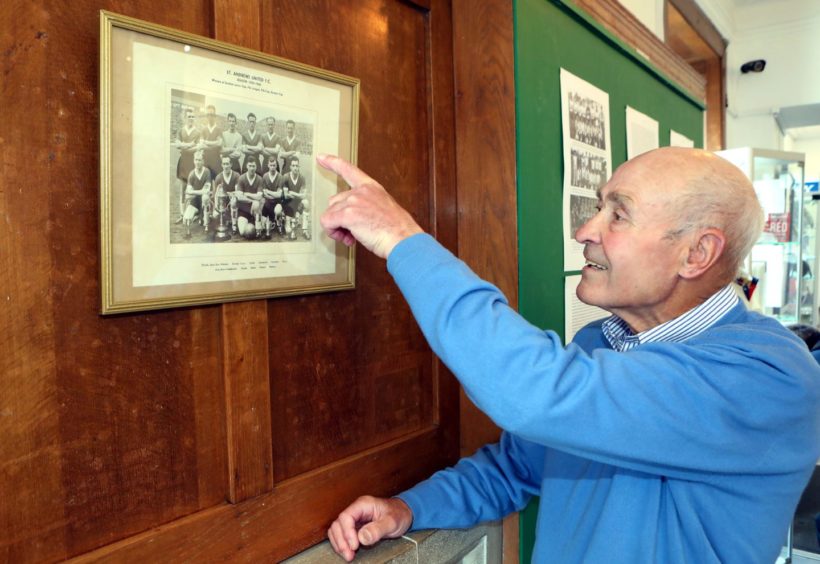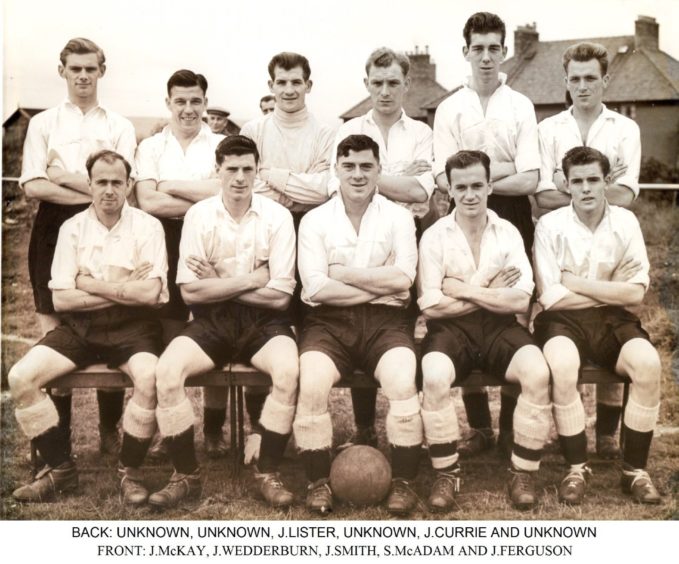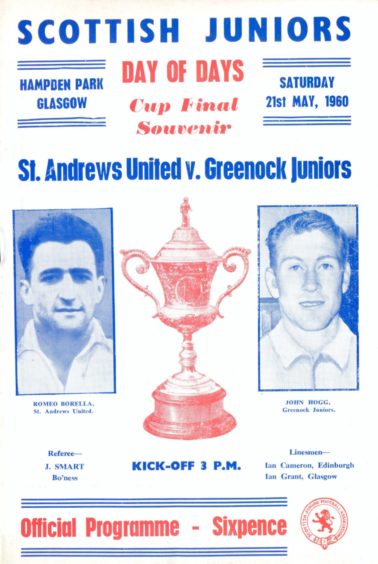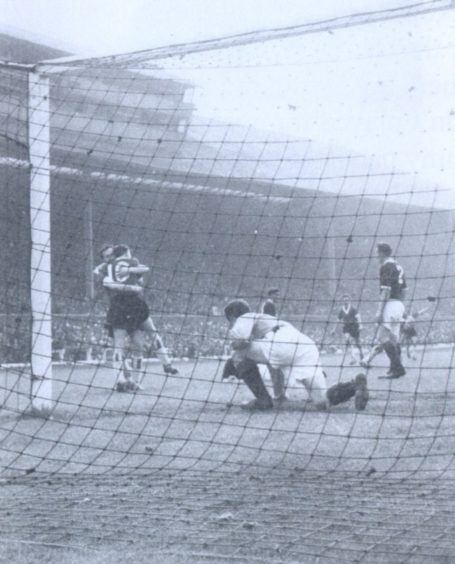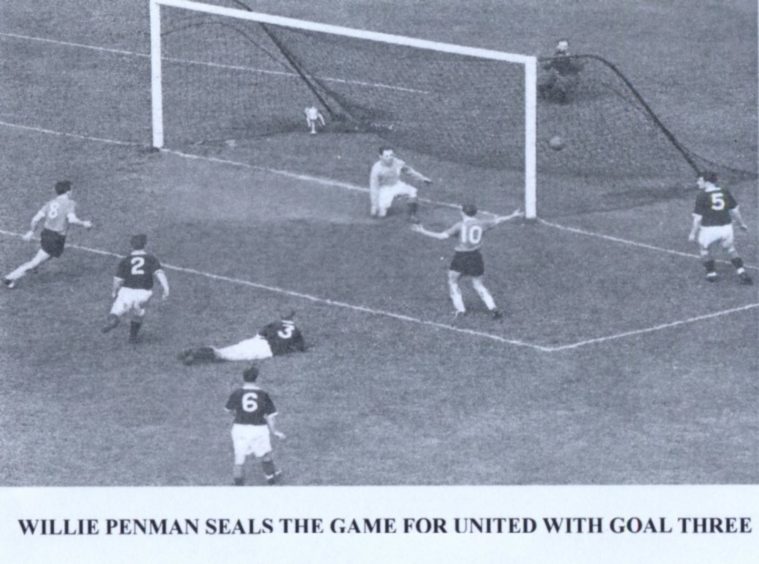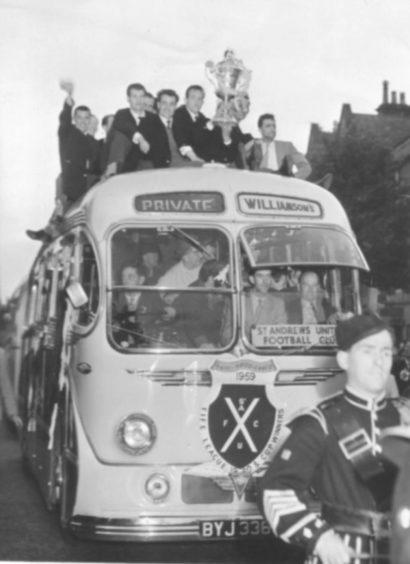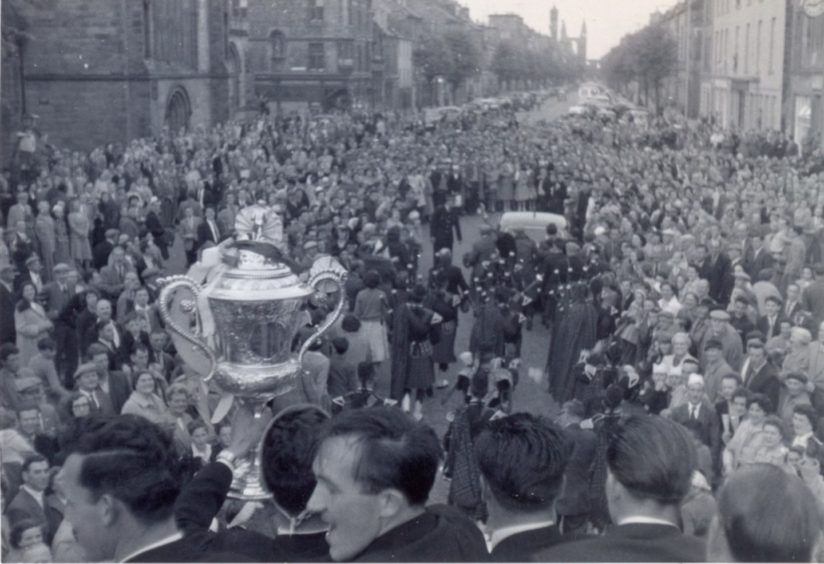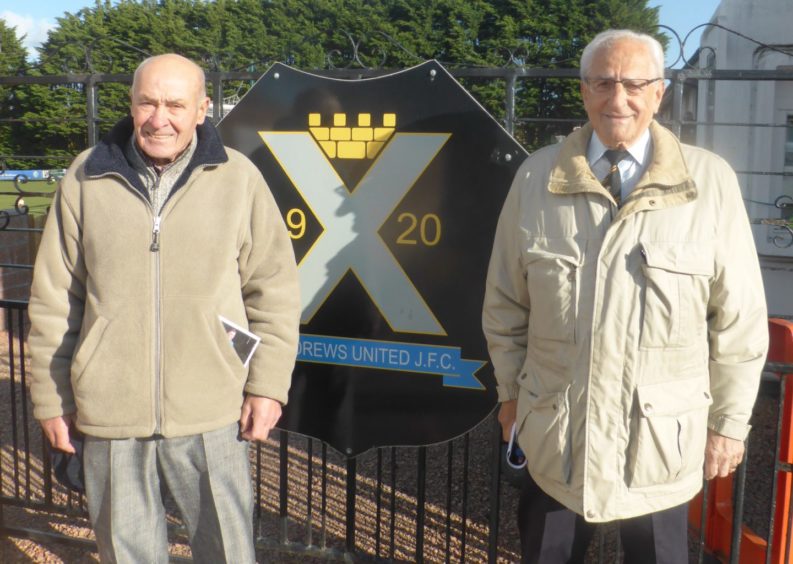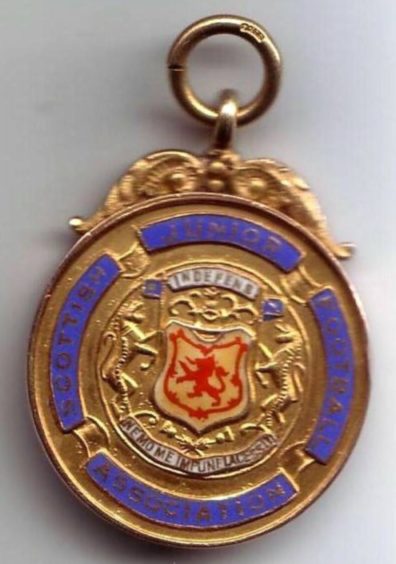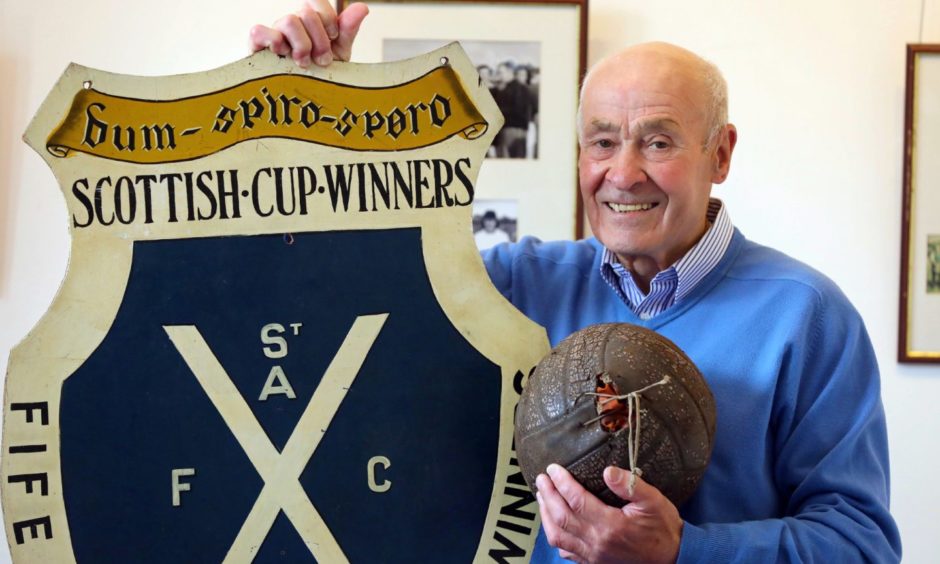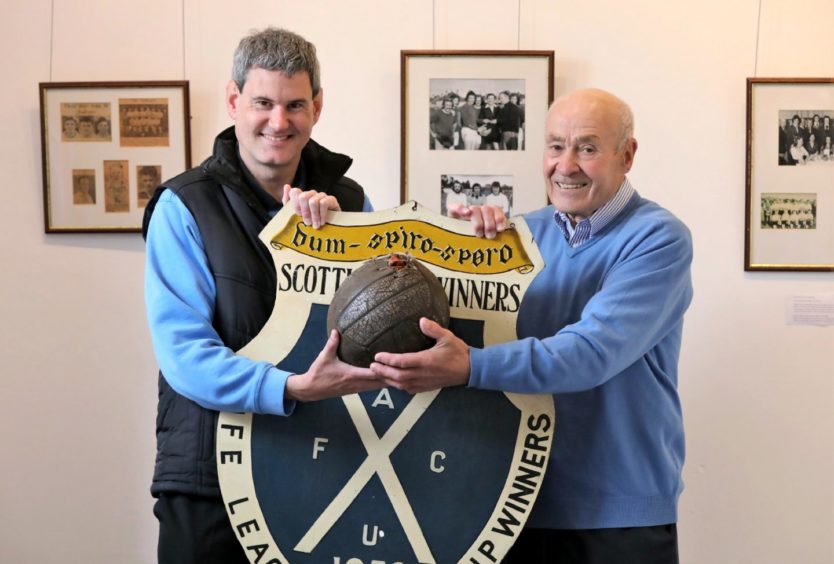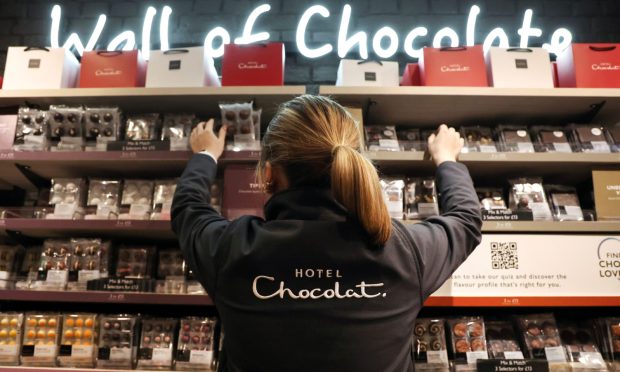One of only two surviving players from the “greatest day” in the history of St Andrews United Football Club has told how he wishes he could do it all again.
Eighty-seven-year-old former bulldozer driver Tommy Will told The Courier his memories of beating Greenock Juniors in the Scottish Junior Cup Final at Hampden Park on May 21, 1960, were without a doubt “one of the highlights” of his life.
Having visited the St Andrews United centenary exhibition at J&G Innes booksellers in St Andrews, as featured in The Courier, Tommy expressed sadness that only he and Romeo Borella remain alive from the starting 11 of that famous cup winning squad.
However, the father of six, grandfather of 13 and great grandfather of 18 remains grateful for the “brilliant” times that live on in his heart.
“My memories of that day were being with a good bunch of boys, a good team,” he says.
“We didn’t expect to win it actually because very seldom does a Fife team win the Scottish cup. It’s usually one of the west of Scotland junior teams.
“However, for St Andrews, we trained hard twice every week for the desserts we got.
“It was just a very happy day when we went there like.
“We were hoping to put on a good show and it was better than what we expected.”
Lifelong love of football
Born in St Monans where his dad worked at Newark Farm, Tommy played football from a young age.
As a 10-year-old at St Monans School he played in goal, and it was as a member of the Waid Academy team in Anstruther that he first met Romeo Borella whose family had a shop in Crail.
Moving to Ladybank when his dad got a job on another farm, Tommy played for Ladybank Violet amateurs as a 15-year-old – winning trophies with them.
When he got called up to do National Service, he played for his RAF Wickenby team on Wednesdays, as well as for a local Lincolnshire team on Saturdays.
Returning to Fife after being demobbed, he signed for Markinch Vics juniors.
While a month’s trial with the “wonderful and well run” Grimsby Town didn’t work out, it was while playing for Markinch that he was scouted to go for a trial with St Andrews United.
“The gaffer was called Jim Spence,” recalls Tommy, “and I got signed after the game.
“I played steady for them. I got £20 for signing on at St Andrews. That was a lot of money to me in those days!”
Tommy enjoyed a lot of success with St Andrews United and recalls some good Saints players including Willie Penman, who signed for Rangers, Jock Hughes, who played with Raith Rovers and Jock Keddie, who played for East Fife.
He has particularly fond memories of playing Scottish Cup ties away from home and “getting half drunk at night and going to clubs and things” with his fellow players.
A definite stand-out, however, was the 1960 Scottish Junior Cup Final in which he played left-half.
Massive underdogs at Hampden
Coming at the end of a season that saw the St Andrews club sustain only one loss on the way to claiming the Fife League title, the 11 men who faced Greenock in front of 34,603 fans at Scotland’s national stadium went into the final as massive underdogs.
Keddie was out after being injured in St Andrews’ Fife Cup Final win against Thornton the week before.
However, in true ‘Roy of the Rovers’ fashion, the Fifers returned to St Andrews not only with the cup after a 3-1 victory but with their very own ‘Roy Race’, one Romeo Borella.
The Crail restaurateur beat Tail o’ the Bank goalkeeper Mike McGinlay with two terrific solo efforts in the second half, having switched positions with Jock Fraser from outside left to inside right at the interval.
Future Rangers and Newcastle United star, Willie Penman then added the third.
Tommy, whose then four-year-old son Tommy Jr was amongst those in the Hampden crowd, remembers having a “good game”.
What sticks in his mind most, however, are the jubilant scenes when the final whistle blew and the rapturous reception when they arrived back in St Andrews.
The streets of various North East Fife villages on the route home were lined with well-wishers, whilst the team bus struggled to travel along South Street in St Andrews because the crowds between the West Port and Town Hall were so large.
Captain and future referee John Hughes held the Scottish Cup out of the team bus window as the procession headed along South Street and the heroic players met the Lord Provost prior to enjoying a long night of celebrations at the Cross Keys Hotel on Market Square.
“It was fantastic like,” says Tommy. “All the singing and joking and the rest of it on the bus. When we arrived in St Andrews at the gates as you go in there at the West Port it was chock-a-block! It was fantastic!
“It was such a great day. Going to Glasgow and beating one of the top teams there. That was a great result like!”
Tommy, who worked as a bulldozer driver at an open cast coalmine off the Standing Stane Road between Kirkcaldy and Windygates at the time – going on to become a works foreman and gaffer on road building projects – eventually gave up playing football after two leg breaks.
However, football remains a passion for the Rangers supporter, who, over the years, managed to have several catch-ups with several ex-St Andrews players – including a surprise meeting with Romeo Borella at a St Andrews United game a couple of years ago.
“I’ve always got a heart for St Andrews United and I always will,” he says.
“I’d do anything for St Andrews! I go along periodically and I see Romeo Borella. There’s only the two of us left now.
“I was just saying this morning it’s sad that all my football pals are away bar the two of us.
“I can remember all the good times we had. I wish we could do it all again. But it’s great to have the memories. Just brilliant!”
St Andrews United centenary exhibition
Events at Hampden that day in 1960 meant St Andrews United became only the second team from Fife at that time to win the Scottish Junior Cup (after Inverkeithing United in season 1912/13).
Not surprisingly, memorabilia featured prominently in the St Andrews United centenary exhibition staged recently in the gallery above J&G Innes booksellers at the corner of South Street and Church Street in St Andrews.
It charted how St Andrews United was formed on May 17, 1921 to help provide First World War service personnel with increased recreational activities and the fledgling outfit quickly became one of the top semi-professional sides in Fife.
Other highlights include winning the Fife Junior League on seven occasions while visitors could also read about the rich history of the club, view player profiles on the ‘Wall of Fame’ and spot familiar faces in old team photographs.
A wide range of memorabilia was on display including old-fashioned leather balls, medals, flags, pennants, trophies, programmes and strips.
A history booklet was also on sale at J & G Innes throughout the exhibition and it was full of stats, stories and photos.
The centenary was also marked with a special tribute by the former chairman of St Andrews Community Council Callum MacLeod.
He took to the bell tower at Holy Trinity Church in St Andrews and played a rendition of the Match of the Day theme tune on the bells which he broadcast live on social media.
